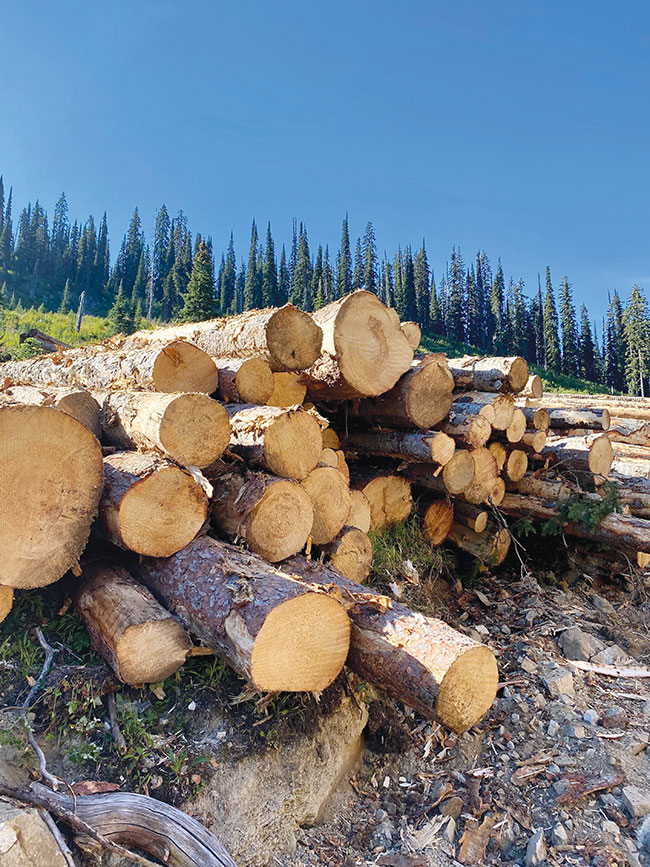
Features
Opinions
Opinion: There is no conspiracy in logging emissions
February 20, 2023 By John Mullinder
 Photo: Annex Business Media
Photo: Annex Business Media Two environmental groups recently teamed up to accuse the Canadian government and the forest industry of being involved in a cover-up of logging’s greenhouse gas emissions. Logging’s emissions, they claimed, were equivalent to those from the oil sands, and Canada needed to fess up.
There is evidence that the groups did consult the two government departments with skin in the game: Natural Resources Canada (NRCan) and Environment and Climate Change Canada (ECCC) but then decided instead to plough ahead, make their own assumptions, and calculate their own numbers.
There’s also some gratuitous stuff in their report and elsewhere: the broad accusation of “obfuscation” and “hidden data.” They claim that government numbers “(bury) the industry’s impact,” and refer to “the sneaky side of Canada’s high-emission logging sector.” And they throw in the obligatory images of nasty-looking clearcuts (despite the fact that their favoured forest certifier, the Forest Stewardship Council, allows clearcutting), and push the false claim that Canada’s boreal forest is “rapidly disappearing.” In fact, a mere 0.15 per cent of the boreal forest is harvested in any one year. Or a mere two per cent over the last 15 years.
How did they come up with their emission numbers? Well, that’s where it gets interesting. They found it incredibly difficult. “While the numbers to determine the sector’s impact are contained in government materials, piecing them together to calculate logging’s net annual emissions is exceedingly and unnecessarily complex. The data are scattered across an expansive array of materials, with some only available upon request.” All great conspiracy stuff then.
In fact, there are no GHG emission numbers specific to logging. That’s because Canada does what all other countries in the United Nations do: calculate GHG emissions according to the guidelines agreed by the Intergovernmental Panel on Climate Change (IPCC). Each country reports emissions and removals from anthropogenic (human) activities. And each country reports emissions and removals from forest management, not from logging specifically. So, the real beef that U.S.-based Natural Resources Defense Council (NRDC) and Nature Canada have is with the IPCC guidelines, not with Canada.
“What they’re doing is trying to argue that, contrary to international reporting guidelines, we must identify logging emissions, not those of forest management, and we must only report what has regrown since harvest, and not the sink of the total managed forest,” said Werner Kurz, senior scientist with the Canadian Forest Service of Natural Resources Canada, in an interview with Business in Vancouver. “(But) the number that we report on the emissions has to be balanced by the regrowth of the managed forests, not just the land that has been previously logged,” added the eight-time contributor to the IPCC.
“What Canada is doing, and what other countries are doing, is we’re looking at the managed forest, and for that managed forest, we estimate all emissions and removals, whether these are from forest regrowth, from slash burning, from the net impacts of fire suppression or insect suppression. It’s the sum of the emissions and regrowth.”
Forest management is more than just hacking down a tree. It’s the measuring and mapping, the planning, the thinning, the harvesting, the treatment of post-harvest residue, the planting, the stand tending, the fire suppression, the protecting of areas for biodiversity, riparian management, and other human activities.
And sometimes, because of IPCC guidelines, emissions are allocated to other categories of the country’s greenhouse gas inventory. For example, emissions from equipment used in timber harvesting and other forestry operations are not included in the managed forest estimates because they are already included in the GHG inventory for transportation emissions. And methane emissions from wood on waste sites are reported in the waste sector, according to internationally agreed standards.
NRDC and Nature Canada should fess up themselves: there is no Canadian conspiracy.
John Mullinder is the author of Little Green Lies and Other BS: From “Ancient” Forests to “Zero” Waste, and Deforestation in Canada and Other Fake News. A former TV reporter in his native New Zealand and foreign correspondent for Maclean’s magazine and the Financial Post, Mullinder ran Canada’s Paper & Paperboard Packaging Environmental Council (PPEC) for 30 years, achieving a number of North American firsts in waste reduction and recycling. www.johnmullinder.ca
Print this page